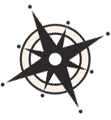The St. Louis River Estuary is the largest freshwater estuary in North America and is the headwaters of the Great Lakes. The Estuary is home to a unique combination of estuarine wetland and aquatic habitats that are important for breeding and migratory birds as well as many species of native fish.
Getting Started

St. Louis River Estuary Public Access and Cultural Guidebook
NOAA Office for Coastal Management
Visitors are able to use this guidebook to explore the St. Louis River Estuary and surrounding area, and gain a better understanding of where various recreational activities are located. The guide also offers a brief history of the region’s Anishinaabe population and culturally significant sites.
Visualizing Conditions

This tool allows the viewer to visualize products derived from remote sensing data for each of the five lakes. Products include Lake Surface Temperature, Harmful Algal Blooms, Chlorophlyy, Disolved Organic Carbon and Suspended Mineral levels.

Wisconsin Shoreline Inventory and Oblique Photo Viewer Map
Association of State Floodplain Managers
Explore how the Great Lakes coasts of Wisconsin have changed since 1976 by viewing beach and bluff conditions, oblique photos and coastal erosion rates.
Place-Based Learning

The Stories and Science of the St. Louis River Estuary
University of Minnesota-Duluth & University of Wisconsin-Madison
This website connects aquatic science research on the impact of human development in the St. Louis River watershed and estuary with stories of important local resource issues and place-based learning activities.

River Talks Speaker Series
Wisconsin Sea Grant & Lake Superior National Estuarine Research Reserve
This annual speaker series brings together scientists, businesses, and staff who work and depend on the St. Louis River Estuary. Speakers share their thoughts and information about river projects each month.

Each May, boatloads of Duluth-Superior area sixth-graders travel through a dozen hands-on educational stations aboard the Vista Star and in South Pioneer Hall at the Duluth Entertainment Convention Center. They learn about the St. Louis River ecosystem and related commercial, industrial and recreational activities.

Rivers2Lake uses the Lake Superior watershed and the St. Louis River, its largest US tributary, as a foundation for educator and student learning, increased Great Lakes literacy, and engagement. The program provides extended training, mentoring, and resources to teachers in order to support them in creating interdisciplinary inquiry-based and outdoor experiences for students.
Place-Based Maps and Data

Deep Map of St. Louis River Estuary
University of Minnesota-Duluth & University of Wisconsin-Madison
This map visualizes information about fishing, shipping, wild rice, recreation, and restoration in the St. Louis River Estuary.

This web map juxtaposes information about historical Indigenous treaty rights around the Great Lakes with data on invasive species, protected lands, and other environmental data.

DIVER (Data Integration, Visualization, Exploration and Reporting) is a NOAA application for the integration and distribution of Natural Resource Damage Assessment-related response, assessment, and restoration data, as well as historical data collected from hazardous sites around the country.
